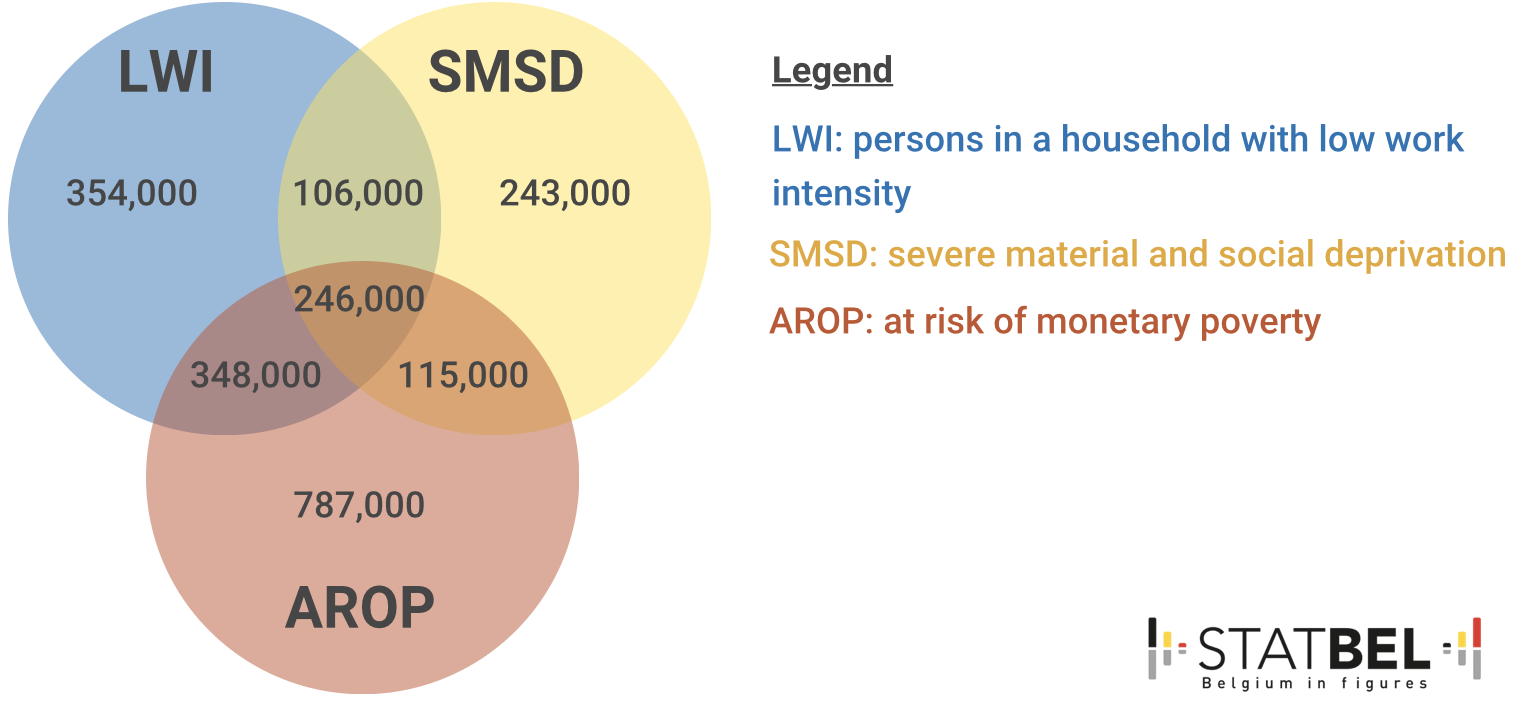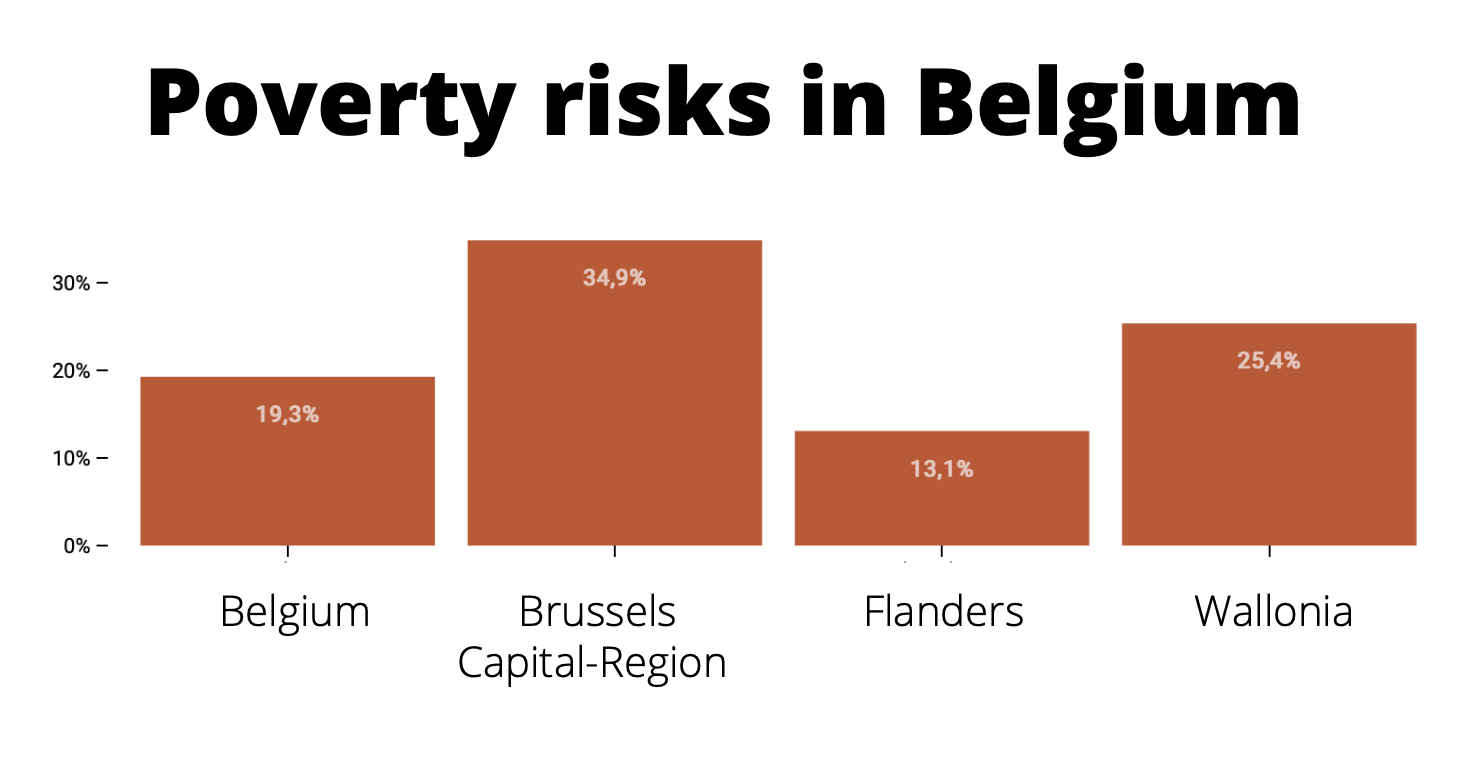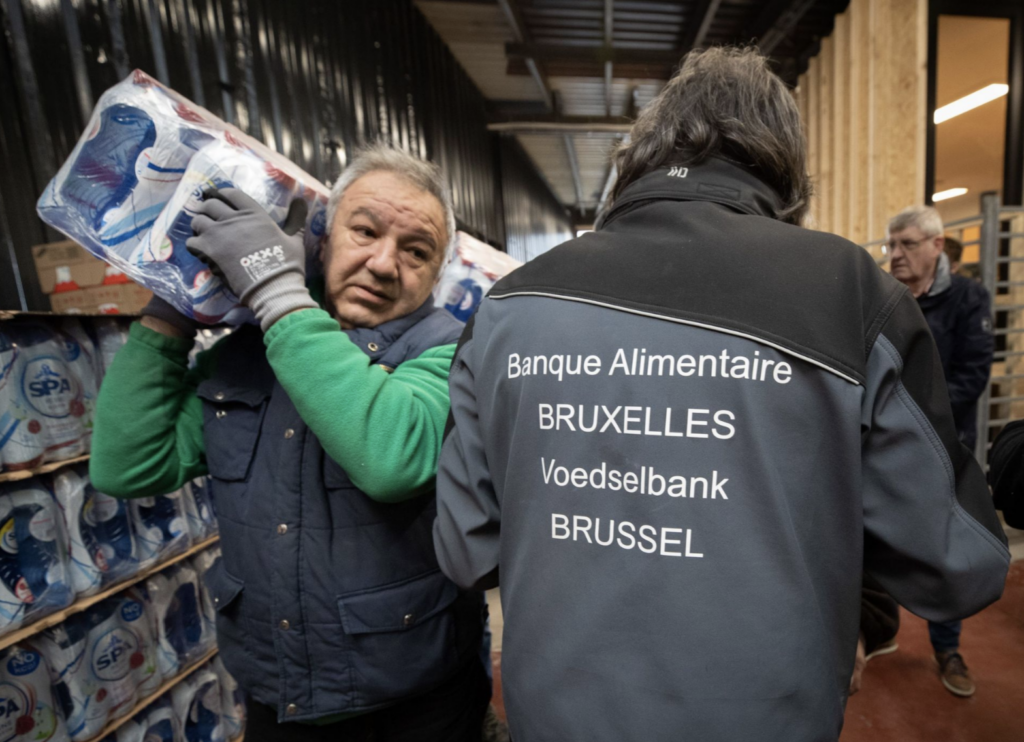Almost 2.2 million people in Belgium were at risk of poverty or social exclusion in 2021, despite the implemented government measures having prevented this figure from being higher.
According to the poverty figures for 2021 published by Belgian statistical office Statbel, a total of 19.3% of the Belgian population faced at least one of the three situations considered at risk of poverty or social exclusion (AROPE) as set out by the European Poverty Indicator. Without the government benefits, this figure would have been as high as 27.8% of the population.
"From this we learn that the financial measures introduced by the government during the pandemic have protected the population from poverty risks," a Statbel statement read.
When looking at the various indicators, 13.1% of the Belgian population are part of a grouping considered to be at risk of monetary poverty — meaning individuals whose total disposable income was below the poverty threshold of €1,287 per month. The figures also showed how 11.9% of the population lived in a household with a low work intensity, and 6.3% of the population was confronted with severe material and social deprivation.

Risk of poverty or social exclusion by sub-indicators. Credit: Statbel
A total of 246,000 people in the country (2.2% of the population) fell under all three risk groupings, meaning they were severely materially and socially deprived, lived in a household with low work intensity and were at risk of monetary poverty.
Effect of pandemic
The 2021 poverty threshold is calculated on people's incomes in 2020, the year the Covid-19 pandemic broke out, which had a severe impact impact on individual earnings.
"In general, we see that the loss of income due to Covid-19 was mainly for the working population. Working people who were affected were able to compensate, to some extent, for that impact through government measures," stated Annelies De Schrijver, the EU-SILC expert at Statbel.
She added that a decrease in the monetary poverty risk was noted, because the 2021 poverty threshold barely increased compared to 2020.
Although the median income of workers has remained more or less stable in comparison with a year earlier due to this lowered threshold, the median income of the self-employed dropped by about 20% compared to last year.
Related News
- Paying double for energy: Rent indexation squeezes struggling tenants
- 'Extra efforts needed': Belgium failing to achieve sustainable development goals
"In addition, more families received a housing allowance, and we see an increase in the number of people who received an unemployment benefit, a bridging allowance or another premium to compensate for the loss of income," De Schrijver said.
Regional differences
For each of the three indicators which are considered to be key indicators of being at risk of poverty, people in the Brussels Capital-Region are the most affected, while those living in the Flemish Region are the least affected.

Regional comparison of people that faced at least one of the three situations considered to be a risk of poverty or social exclusion (AROPE). Credit: Statbel
The Walloon Region has higher poverty levels than the national level, even if the situation is not as precarious as in Brussels.
Aside from geographical differences, the situation within population groups differs substantially as well. Monetary poverty is most common among people living in densely populated areas (20.8%), those with a lower level of education (24.8%) and the unemployed (37.7%), while people who live in moderately populated areas (8.7%), who are highly educated (6.2%), and those who work (3.8%) are least likely to be at risk.

